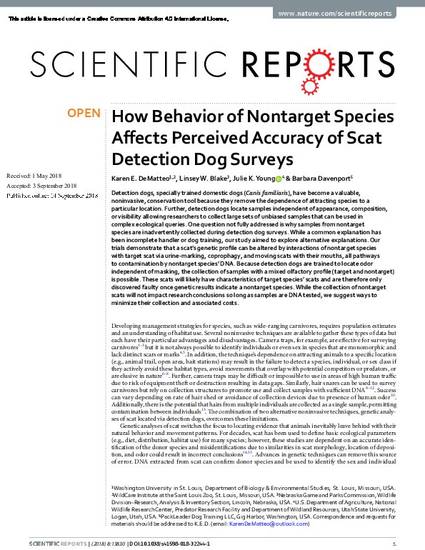
SCIENTIFIC REPORTS | (2018) 8:13830
Detection dogs, specially trained domestic dogs (Canis familiaris), have become a valuable, noninvasive, conservation tool because they remove the dependence of attracting species to a particular location. Further, detection dogs locate samples independent of appearance, composition, or visibility allowing researchers to collect large sets of unbiased samples that can be used in complex ecological queries. One question not fully addressed is why samples from nontarget species are inadvertently collected during detection dog surveys. While a common explanation has been incomplete handler or dog training, our study aimed to explore alternative explanations. Our trials demonstrate that a scat’s genetic profile can be altered by interactions of nontarget species with target scat via urine-marking, coprophagy, and moving scats with their mouths, all pathways to contamination by nontarget species’ DNA. Because detection dogs are trained to locate odor independent of masking, the collection of samples with a mixed olfactory profile (target and nontarget) is possible. These scats will likely have characteristics of target species’ scats and are therefore only discovered faulty once genetic results indicate a nontarget species. While the collection of nontarget scats will not impact research conclusions so long as samples are DNA tested, we suggest ways to minimize their collection and associated costs.
Available at: http://works.bepress.com/julie_young1/237/

© The Author(s) 2018
Open access
DOI:10.1038/s41598-018-32244-1